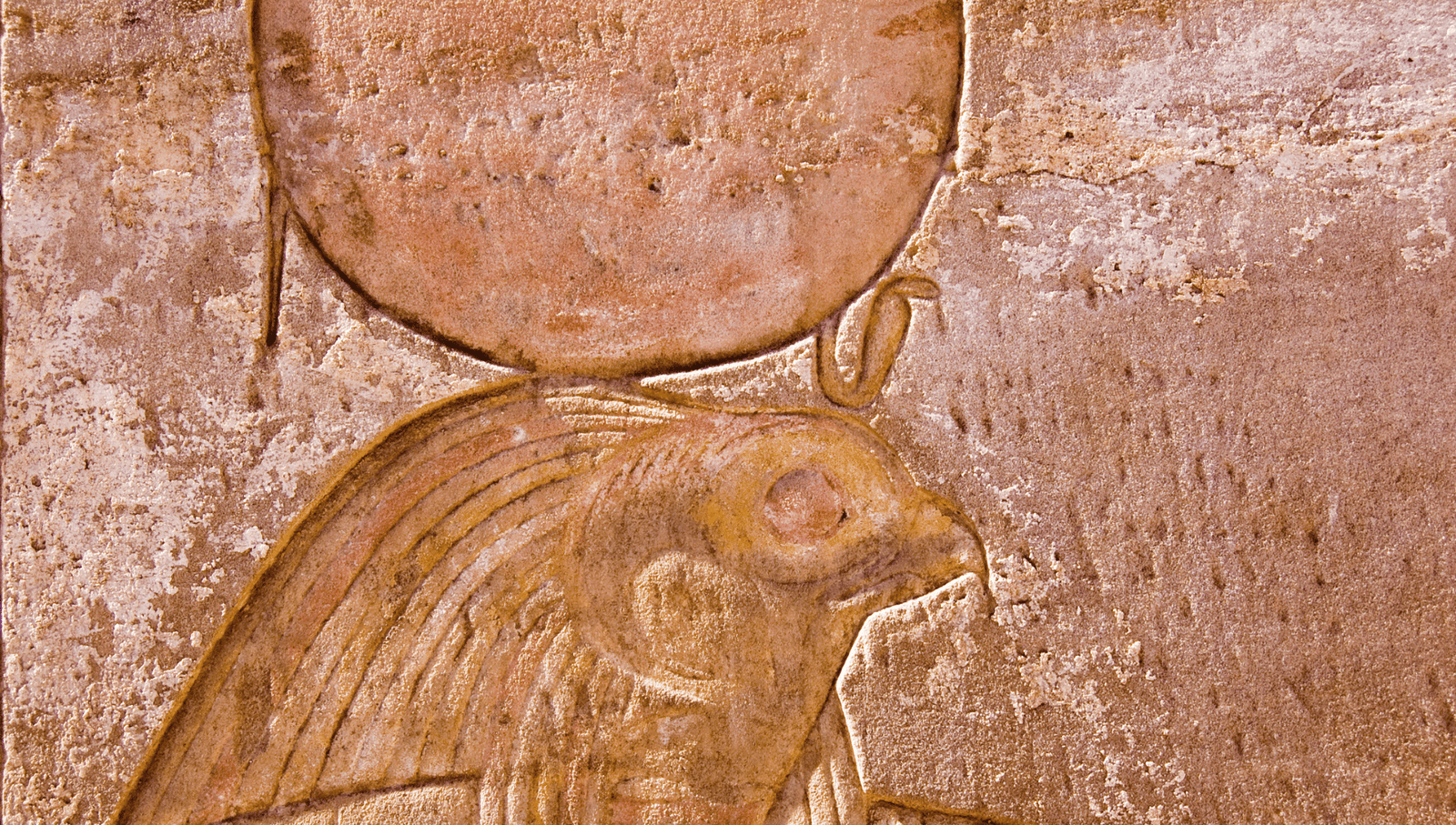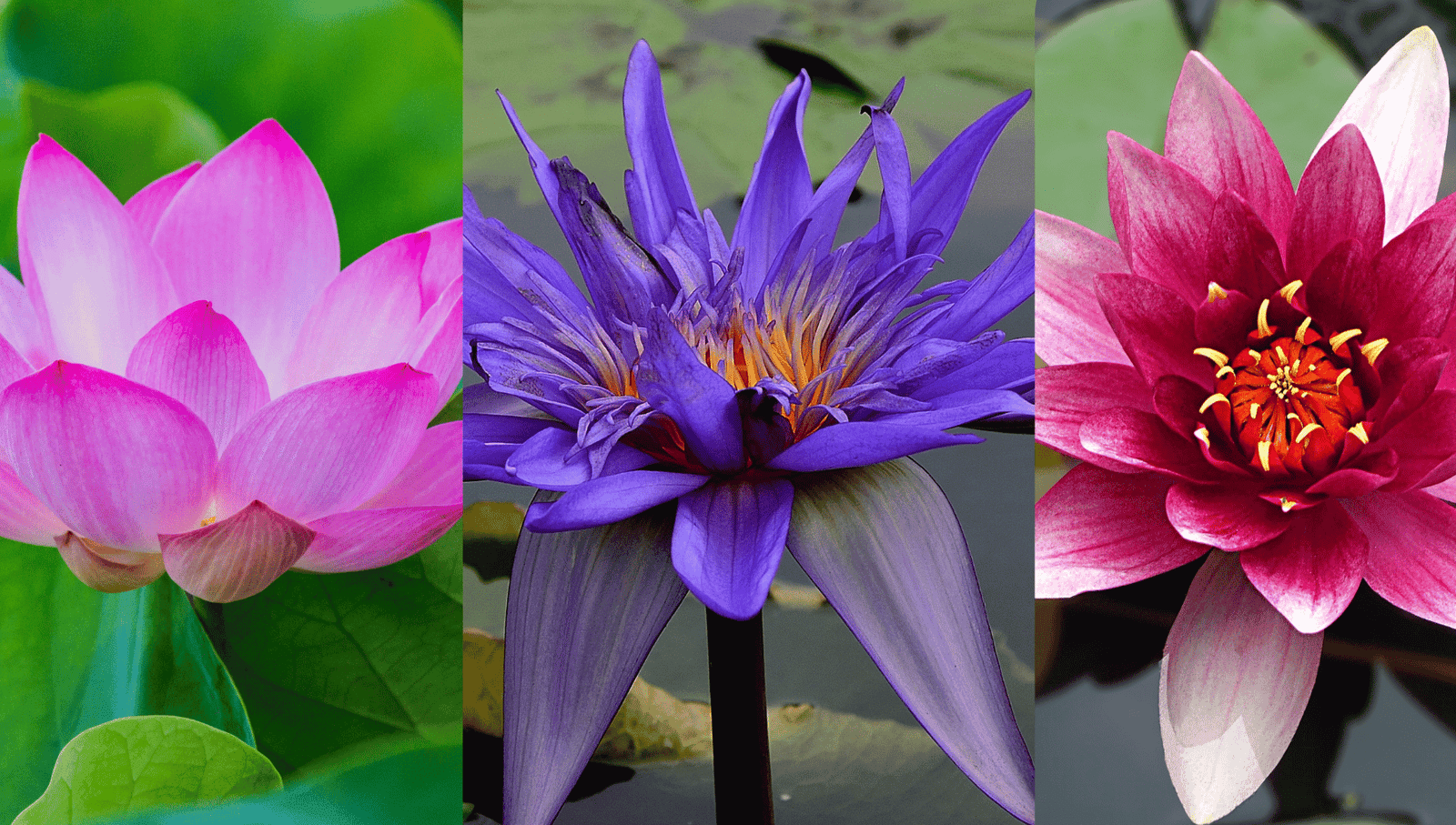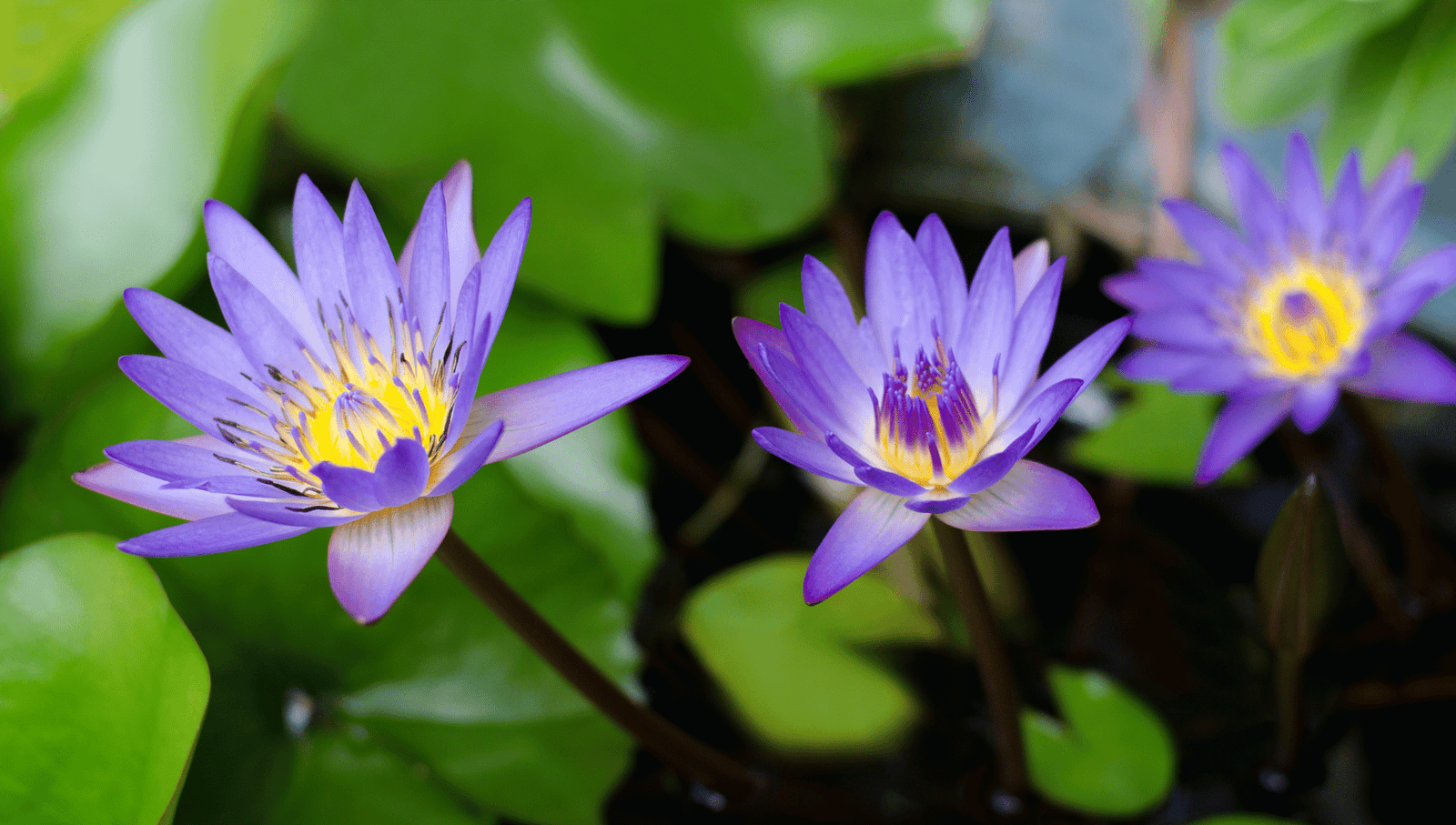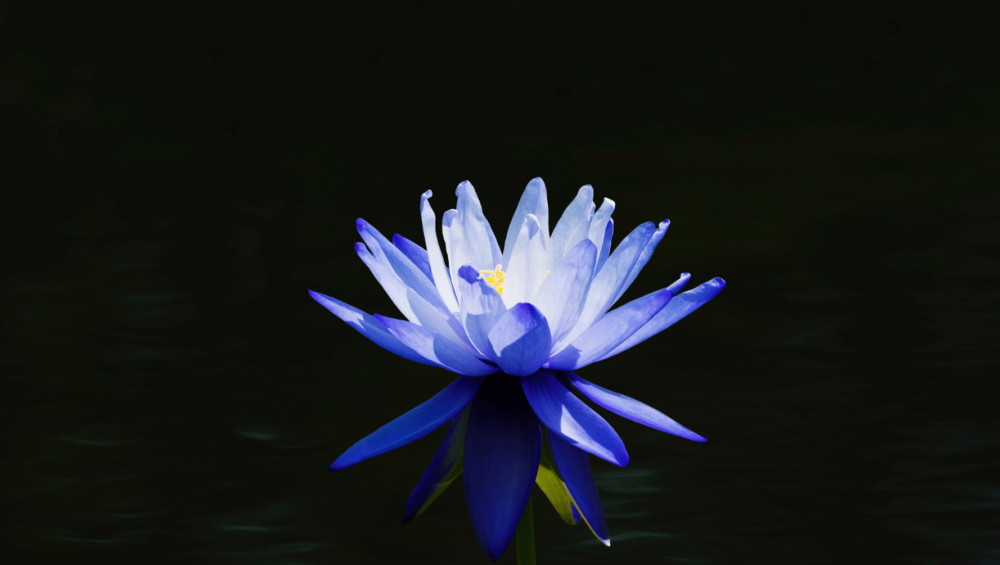Embark on a voyage back in time, to a civilization built along the fertile banks of the Nile, where gods walked among mortals and symbols held the power of the universe.
Among the most sacred and enduring of these symbols is the captivating Blue Lotus. To truly comprehend the soul of ancient Egypt, one must first understand the profound blue lotus meaning.
This is not merely the study of a flower; it is an exploration of creation, rebirth, and the eternal connection between the physical and spiritual realms.
This guide will delve deep into the rich tapestry of the blue lotus meaning, revealing its history, its symbolism, and how you can witness its legacy firsthand on an unforgettable journey through Egypt. The layers of the blue lotus meaning are as numerous as its delicate petals, each one opening to reveal a deeper truth about the culture that revered it.
Introduction to the Blue Egyptian Lotus: More Than Just a Flower
The blue lotus meaning begins with its physical presence. The blue Egyptian lotus, known botanically as , is an intoxicatingly beautiful water lily that once flourished in abundance along the Nile River and its tranquil backwaters.
With its striking azure-to-violet petals and a brilliant yellow center, it was a jewel of the aquatic landscape. But to the ancient Egyptians, its beauty was secondary to its divine significance. The pursuit of the blue lotus meaning is a core part of Egyptology.
They saw in the flower’s daily cycle—opening its petals to the morning sun and closing them at dusk to sink below the water—a mirror of the cosmos itself.
This daily resurrection became a powerful metaphor, embedding the blue lotus meaning deep into the heart of their spiritual beliefs and making it a cornerstone of their iconography. Understanding this cycle is the first step in appreciating the complete blue lotus meaning.
What is the Blue Egyptian Lotus? An Overview of its Appearance and Habitat
The blue Egyptian lotus is a perennial aquatic plant. Its large, round leaves, often up to 40 cm in diameter, float serenely on the water’s surface, creating a lush green carpet. From this carpet rise the magnificent flowers on sturdy stems, reaching for the sky. Unlike some other lotus varieties, the blue lotus is a water lily whose flowers typically float on the water or rise just above it. The plant’s life is governed by sunlight; it blooms in the day and retracts at night.
This simple botanical fact is the genesis of the powerful blue lotus meaning. This behavior, so reliable and consistent, was not seen as a mere biological function but as a sacred cosmic dance, solidifying the spiritual blue lotus meaning for millennia. The habitat in the slow-moving, life-giving waters of the Nile further enhanced its association with fertility and creation, a key aspect of the blue lotus meaning.
The Core Blue Lotus Egyptian Meaning: Symbolism and Mythology
To truly grasp the blue lotus egyptian meaning, we must venture into the pantheon of Egyptian gods and their creation myths. The flower was not just a symbol; it was an active participant in the stories of the divine. The multi-faceted blue lotus meaning is a direct reflection of its role in these sacred narratives.
Scholars have spent lifetimes deciphering the full scope of the blue lotus meaning, finding its presence in every aspect of Egyptian spirituality. Every depiction in a tomb or temple adds another layer to our understanding of the blue lotus meaning.
The Primordial Egyptian Lotus Symbol: Creation and the Sun God Ra
At the very heart of the egyptian lotus symbol is the story of creation. In the beginning, there was only the dark, primordial water of chaos, known as Nun. According to one of the most prominent creation myths, from these waters emerged a single, magnificent blue lotus. As its petals slowly opened, they revealed the young sun god, Ra (or Nefertem in some versions), sitting within.
This singular act represented the first dawn, the first sunrise, and the banishment of darkness. Ra, born from the lotus, then proceeded to create all other gods and life. Therefore, the most fundamental blue lotus meaning is that of creation, origin, and the source of all light and life.
The flower is literally the vessel of creation, a concept that reinforces the immense power behind the blue lotus meaning. This foundational myth is why understanding the blue lotus meaning is critical to understanding Egyptian cosmology.
Email Us to Book Your Trip info@odysseysvoyage.com
Explore more at www.odysseysvoyage.com
Blue Lotus Symbolism: Rebirth, Eternity, and the Afterlife

Beyond creation, the blue lotus symbolism is most powerfully connected to the concepts of death and rebirth. The flower’s daily cycle of opening and closing was a perfect earthly parallel to the sun’s journey across the sky and its disappearance into the underworld each night, only to be reborn the following morning.
This potent symbolism was not lost on the Egyptians, a culture deeply preoccupied with the afterlife. The blue lotus meaning thus became synonymous with resurrection and eternal life.
Tomb paintings and funerary texts frequently depict the deceased holding a blue lotus to their nose, symbolically inhaling its divine scent and, with it, the promise of rebirth.
The famous funerary mask of Tutankhamun is adorned with these sacred flowers. This powerful association with the journey of the soul makes the blue lotus meaning a message of hope against the finality of death.
Exploring this aspect of the blue lotus meaning provides deep insight into the Egyptian perspective on mortality. They believed that by embracing the blue lotus meaning, they could ensure their own eternal cycle of life.
The Lotus Flower Egyptian Meaning in Divine Connection: Nefertem and Perfume
The lotus flower egyptian meaning is also intrinsically linked to the god Nefertem, who was not only a god of the sunrise but also the god of perfume, beauty, and healing. He was often depicted as a beautiful young man with a blue lotus flower upon his head.
The intoxicating, sweet fragrance of the blue lotus was believed to be his divine essence. Inhaling its perfume was considered a way to connect with the gods, to receive their blessings, and to heal the body and spirit.
This olfactory dimension adds a deeply personal and sensory layer to the blue lotus meaning. In rituals, priests would use perfumes derived from the lotus to purify sacred spaces and anoint statues of the gods.
For the individual, the blue lotus meaning was a pathway to tranquility and heightened spiritual awareness, a divine perfume that calmed the soul. This element of the blue lotus meaning highlights its use in personal and public religious practice.
Email Us to Book Your Trip info@odysseysvoyage.com
Explore more at www.odysseysvoyage.com
The Tangible Legacy: The Blue Lotus in Ancient Egyptian Art and Rituals
The pervasive nature of the blue lotus meaning is most evident in its constant presence throughout ancient Egyptian civilization. It was not confined to mythology; it was an integral part of art, architecture, and daily ritual. The quest to find the blue lotus meaning often begins by observing its depiction in ancient artifacts.
Decoding the Egyptian Lotus Flower Symbol in Hieroglyphs and Temple Art
Walk through the majestic temples of Karnak or Luxor, and you will see the egyptian lotus flower symbol everywhere. The tops of massive columns are carved to resemble blooming lotus flowers, making it seem as if the very heavens are supported by these sacred blossoms. In hieroglyphs, the lotus symbol, or Sesen, represents the number 1,000, signifying abundance and multitudes.
It also appears in scenes of offerings, banquets, and divine councils. Each carving is a testament to the enduring power of the blue lotus meaning. To witness these ancient carvings is to see the blue lotus egyptian meaning etched in stone, a permanent record of its importance.
Imagine standing before these colossal pillars, their forms inspired by a simple flower. You can connect directly with this powerful history. Our Egypt Travel Packages are expertly designed to guide you through these sacred sites, with Egyptologists who can illuminate the deep blue lotus meaning behind every symbol you see.
The Sacred Scent: The Role of the Blue Lotus in Ceremonies and Healing
Ancient Egyptians integrated the blue lotus into their most important rituals. There is evidence to suggest they steeped the flowers in wine, creating a fortified drink that induced a state of relaxed euphoria and heightened awareness.
This concoction was likely used in religious ceremonies and by the elite to facilitate a closer connection to the divine. The psychoactive properties, though mild, were seen as a key part of the blue lotus meaning, offering a glimpse into the spiritual world.
The flower was also a staple in traditional medicine, used as a sleep aid and for its calming properties. This practical application demonstrates that the blue lotus meaning extended from the highest realms of mythology to the tangible world of human well-being. This medicinal aspect of the blue lotus meaning is now being rediscovered by modern holistic practices.
The historical context of the blue lotus meaning is enriched by its use in these ceremonies. This ritualistic blue lotus meaning shows a desire to experience the divine directly.
Email Us to Book Your Trip info@odysseysvoyage.com
Explore more at www.odysseysvoyage.com
Experience the Nile’s Magic: The Best Way to Connect with the Blue Lotus Meaning

The Nile is the source of all life in Egypt, and it was the cradle of the blue lotus itself. To truly feel the essence of the blue lotus meaning, you must journey upon its waters. While a standard cruise offers beautiful views, a more intimate and authentic experience awaits you on a Dahabiya. These traditional sailing vessels offer a journey back in time, gliding peacefully along the same routes as the pharaohs.
As you drift between Luxor and Aswan, you can almost feel the ancient world come alive. The gentle pace allows you to absorb the scenery, watch the vibrant birdlife, and contemplate the profound blue lotus meaning as you pass by riverbanks where it once grew in profusion. This is not just a vacation; it’s a meditative pilgrimage into the heart of the egyptian lotus flower meaning.
We offer a fleet of luxurious Dahabiyas to suit your desired journey:
- For a perfect long weekend: 4-Nights Dahabiya Cruise from Luxor to Aswan
- For a deeper immersion: 6 Days 5 Nights of Luxury: A Dahabiya Journey Through Egypt’s Timeless Treasures
- Experience the reverse journey: 6-Nights Dahabiya Cruise Aswan to Luxor
- A full week of luxury: 8-Day Dahabiya Journey: A Luxurious Adventure Through Ancient Egypt
- For the ultimate explorer: 10-Day Exploration: Nile Dahabiya Experience
- The grand tour: 12-Day Adventure and Luxurious Dahabiya Cruise
Sailing on a Dahabiya Nile Cruise is the ultimate way to connect with the authentic blue lotus meaning.
Email Us to Book Your Trip info@odysseysvoyage.com
Explore more at www.odysseysvoyage.com
Craft Your Own Spiritual Quest: Tailor-Made Egyptian Adventures
Perhaps your interest in the blue lotus meaning is part of a larger spiritual or historical quest. You may wish to focus specifically on sites related to creation myths, healing temples, or agricultural traditions. We believe your journey should be as unique as you are. With our Tailor-Made Experiences, you can work with our experts to design a personalized itinerary.
Whether you’re a botanist, a historian, a spiritual seeker, or simply a curious traveler, we can help you create a trip that focuses on the aspects of the blue lotus meaning that resonate most with you. You can build an entire journey around understanding the complete blue lotus meaning.
An Educational Odyssey: Blue Lotus Meaning for Scholars and Students
The academic and historical significance of the lotus in egyptian culture is vast. For students and educators, understanding the blue lotus meaning is a key to unlocking a deeper appreciation of ancient history, religion, and art. We facilitate educational journeys that go beyond the surface.
Our Students Tour Packages provide an immersive, curriculum-enriching experience, bringing the world of ancient Egypt and the profound blue lotus meaning to life for the next generation of scholars and explorers. Studying the blue lotus meaning on-site provides an unparalleled educational experience.
Beyond the Myth: Botanical Realities of the Egyptian Blue Lotus
While the blue lotus meaning is steeped in myth, its botanical identity is also fascinating. It is important to distinguish the blue egyptian lotus from other species.
- Scientific Classification: The authentic Egyptian Blue Lotus is . It is a water lily, not a true lotus. The “Sacred Lotus” often seen in Asian iconography is , a different genus entirely. The specific botany of is central to the original blue lotus meaning.
- Appearance: The key is the blue-violet petals. True lotuses (Nelumbo) are typically pink or white. The blue lotus meaning is tied specifically to this color.
- Leaf and Flower Structure: The leaves of the blue lotus float on the water’s surface. The leaves of a true lotus (Nelumbo) are typically elevated high above the water on strong stems. This difference is crucial for proper identification when considering the historical blue lotus meaning.
Email Us to Book Your Trip info@odysseysvoyage.com
Explore more at www.odysseysvoyage.com
The Modern Echo: Contemporary Uses and Cultural Significance
Today, the allure of the blue lotus meaning continues to captivate. Its legacy lives on in wellness communities and among spiritual seekers.
The flower is used in modern aromatherapy, with its essential oil being highly prized for promoting relaxation, tranquility, and emotional well-being. It is also available as a tea or extract, used by many as a natural sleep aid or for meditation, connecting them to the ancient ritualistic aspects of the blue lotus meaning.
This modern revival shows the timeless power of the blue lotus meaning. The persistence of its use confirms the ancient understanding of the blue lotus meaning. The global interest in the blue lotus meaning is a testament to its enduring appeal.
Cultivating a Legend: How to Grow the Blue Lotus at Home
For those who wish to have a living connection to the ancient blue lotus meaning, it is possible to cultivate in home water gardens or ponds, provided you have the right conditions.
- Environment: The plant requires warmth and at least six hours of direct sunlight per day.
- Container: Use a wide, deep container without drainage holes.
- Soil: Plant the tuber in heavy clay or loam soil, topped with a layer of sand or gravel.
- Water: Submerge the pot so the water level is at least 12 inches above the soil.
- Care: Fertilize periodically with aquatic plant tablets to support healthy growth and vibrant blooms.
By growing your own, you can observe the daily cycle of opening and closing, gaining a personal appreciation for the powerful blue lotus meaning.
Conclusion: Why the Blue Lotus Continues to Captivate

From a symbol of cosmic creation to a promise of eternal life, the blue lotus meaning is one of the most complete and profound narratives in ancient symbolism.
It is a story of light from darkness, life from water, and the spirit’s triumph over the physical world. The blue lotus egyptian meaning is not a relic of the past; it is a living legacy that speaks to our own search for beauty, tranquility, and transcendence. The enduring fascination with the blue lotus symbolism shows our innate connection to these universal themes.
Whether you experience it through studying ancient art, cruising the majestic Nile, or cultivating its beauty in your own garden, exploring the blue lotus meaning is a journey worth taking. It is an invitation from the ancient world to find the divine in the natural, and the eternal in the ephemeral. The ultimate blue lotus meaning is this invitation to explore.
Are you ready to witness the legacy of the Blue Lotus for yourself?
Explore our curated Egypt Nile Cruises or contact our travel experts directly to begin planning your bespoke journey into the heart of ancient Egypt.
Email Us to Book Your Trip info@odysseysvoyage.com
Explore more at www.odysseysvoyage.com
(FAQ) about the Blue Lotus Meaning
What do people use Egyptian blue lotus for?
Historically, ancient Egyptians used it in religious and spiritual ceremonies, often infused in wine, for its ability to induce relaxation and heightened spiritual sensitivity. Today, its derivatives (teas, oils, extracts) are primarily used for relaxation, meditation, aromatherapy, and as a natural sleep supplement. This modern use is a continuation of the ancient blue lotus meaning related to tranquility.
What does blue lotus do to your body?
The blue lotus contains alkaloids like apomorphine and nuciferine, which have mild psychoactive properties. It can promote a sense of calm and euphoria, relieve stress, and act as a mild sedative. It is not a hallucinogen but can enhance mood and, for some, encourage lucid dreaming, which aligns with the spiritual aspect of the blue lotus meaning.




